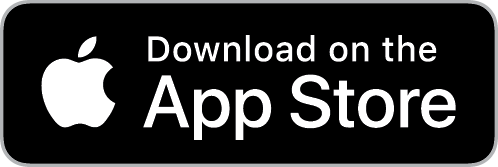English - National 5 Index
Online Lessons for Students in Scotland learning National 5 English
Own Words – refers to questions that ask you to find information or answers in the passage and then say the same thing but using your own words as much as possible. In this lesson explore how to answer ‘own word’ questions.
Connotation is the use of a word to suggest a different association than its literal meaning, which is known as denotation. Connotations can be either positive, negative, or neutral. Writers often use different connotations to inject multiple layers of meaning into a word, phrase, or passage.
When considering the language used by a writer, you can think of another word or expression the writer could have used. This will then allow you to compare the word used against an alternative and consider what the advantage was of using the word selected for the text. In this lesson explore how to answer word choice questions.
Imagery is a feature of written and spoken language that occurs whenever someone has chosen to use language in a non-literal way. It is used to heighten the effect of language and is often an extension of word-choice. In this lesson explore how to answer imagery questions.
Structure, in this context, means how a sentence is built up or constructed. In this lesson learn how to answer sentence structure questions.
A linking question will always ask you to show how a sentence, or part of a sentence, creates a link. That is how it joins paragraphs/ideas together. This means you need to show how that sentence links to the earlier paragraph or idea and how it links forward to the next idea or paragraph. In this lesson learn how to answer linking questions.
Tone refers to the attitude that a writer conveys towards a subject. A writer may be passionately for or against a particular topic and express this through various means. In this lesson learn how to answer tone questions.
The primary purpose of an introductory paragraph is to pique the interest of your reader and identify the topic. In this lesson learn what makes an introductory paragraph effective.
In this lesson learn what makes a conclusion paragraph effective.
In this lesson, develop your understanding of the critical reading exam. Develop your understanding of the critical essay section of the exam. Consolidate your knowledge of critical essay writing.
Certain literary techniques are used to increase the dramatic tension in a novel or short story. In this lesson revise the definition of the main dramatic techniques and identify examples in context.
Sometimes stylistic prose techniques are used to add depth and character to the story. Perhaps the two most common techniques are the use of simile and metaphor, though other techniques exist as well. In this lesson revise the definition of the main prose techniques and identify examples in context.
In this lesson revise the definition of the main poetry techniques and identify examples in context.
In this lesson revise the definition of the main film and television techniques and identify examples in context.
It is important to plan your critical essay before you start writing. An essay has a clear structure with an introduction, paragraphs with evidence and a conclusion. In this lesson identify what information to include in a critical essay. Improve your ability to plan extended pieces of writing.
An introduction should focus directly on the essay question or title and aim to present your main idea in your answer. In this lesson consolidate what you know about writing an essay introduction.
It’s important to think about how you should structure your paragraph. In this lesson identify strengths and targets for exemplar paragraphs.
A conclusion is the final paragraph of your essay. It should tie all the loose ends of your argument together. In this lesson consolidate what you know about writing conclusions.
Develop your understanding of the Scottish Set Text Section of the exam.
Certain literary techniques are used to increase the dramatic tension in a novel or short story. In this lesson revise the definition of the main dramatic techniques and identify examples in context.
Sometimes stylistic prose techniques are used to add depth and character to the story. Perhaps the two most common techniques are the use of simile and metaphor, though other techniques exist as well. In this lesson revise the definition of the main prose techniques and identify examples in context.
In this lesson revise the definition of the main poetry techniques and identify examples in context.
Choosing a topic. In this lesson develop your understanding of personal writing. Explore potential topics for your personal essay. Learn to choose a suitable topic for an essay.
In this lesson develop your ability to describe personal experiences. Consolidate what you already know about descriptive writing. Learn to understand and use a range of creative language techniques.
In this lesson develop your understanding of the structure of personal writing. Develop your ability to tell a story in an organised and engaging fashion.
In this lesson develop your understanding of prose-fictional writing. Explore potential topics for your short story. Choose a suitable topic for your piece.
In this lesson develop your ability to create convincing characters and settings. Understanding and use a range of creative language techniques.
In this lesson develop your understanding of the structure of prose fiction writing. Learn to tell a story in an organised and engaging way. Understand how to create an effective opening for your story.
Before you start your writing, you should make several important steps. Don’t think that you can write several pages about anything you want and expect a positive mark. The discursive essay is not a simple task.
There are many sources you can use to find information for your discursive essay. In this lesson understand what makes a source reliable and develop your ability to plan research. Understand the importance of a bibliography.
In this lesson develop your understanding of different types of evidence. Understand the importance of using a range of evidence types. Understand how to include a range of evidence types.
In this lesson revise the different argumentative and persuasive techniques in discursive writing. Understand what makes these techniques persuasive and when they can be used in your own writing.
In this lesson learn how to plan a piece of discursive writing. Understand the different components of persuasive and argumentative essays. Understand how and why to link different points.
In this lesson understand how to write an argumentative or persuasive introduction, paragraph and conclusion.


"It's bright and colourful, easy to read, and extremely easy to use unlike most textbooks or online learning websites" Daisy, S3 PupilSign Up & Learn Today

